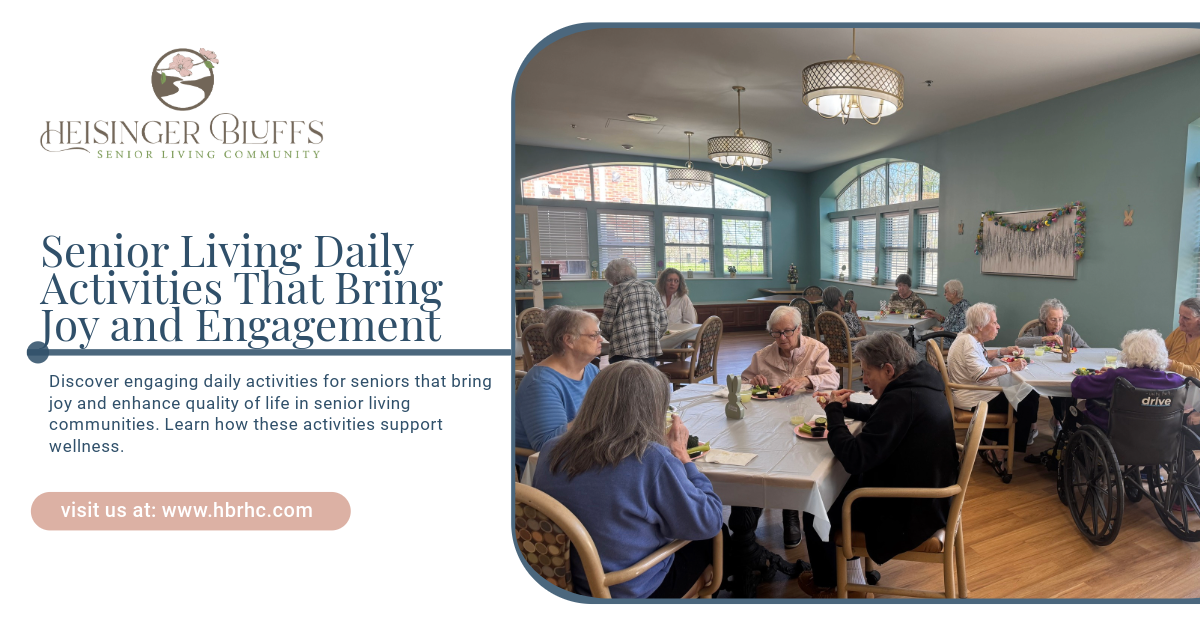Key Signs It May Be Time to Consider Assisted Living for Your Loved One

Assisted Living for a Loved One: Signs to Consider
Making the decision to move a loved one to an assisted living facility is a deeply personal and often difficult choice. Many families grapple with questions about when the right time is to transition their loved one from independent living to a community that offers more hands-on care. The goal of assisted living is to provide a safe, supportive environment that enhances the quality of life for seniors, but recognizing the signs that it’s time to make the move can be challenging.
In this guide, we’ll explore the key indicators that suggest it might be time to consider assisted living, focusing on safety, health, and well-being. By understanding these signs, you can make an informed and compassionate decision for your loved one.
1. Difficulty with Daily Activities (ADLs)
One of the most common signs that it may be time to consider assisted living is when a senior begins to struggle with activities of daily living (ADLs). ADLs are the basic tasks necessary for independent living, including:
- Bathing and grooming
- Dressing
- Toileting
- Eating
- Mobility
If your loved one is finding it difficult to complete these activities without assistance, it’s a sign they may need more support. Difficulty with personal hygiene, wearing the same clothes repeatedly, or struggling to move around the house safely can all indicate that assisted living could improve their quality of life.
2. Frequent Falls and Safety Concerns
Falls are a major risk for older adults, and even a minor fall can lead to serious injury, such as fractures or head trauma. If your loved one has experienced repeated falls or seems unsteady on their feet, it’s important to assess their living environment for potential hazards. However, even in the most hazard-free home, seniors who are prone to falling may still be at risk.
Assisted living communities are designed with senior safety in mind, offering features such as handrails, emergency call systems, and 24/7 staff support. If your loved one is at increased risk of injury due to mobility issues, it might be time to consider assisted living, where their safety can be better ensured.
3. Decline in Health and Medical Needs
Chronic health conditions are common among seniors, and managing these conditions often requires regular monitoring and medication management. If you’ve noticed that your loved one is struggling to keep up with medical appointments, taking medications correctly, or managing a chronic illness like diabetes, hypertension, or COPD, assisted living may be a helpful option.
Assisted living communities typically offer medication management services, ensuring that residents take their prescribed medications on time and as directed. Additionally, many communities have staff available to monitor health conditions and provide assistance with daily healthcare needs. If your loved one’s medical needs are becoming too complex for home care, assisted living can provide a safer and more structured environment.
4. Social Isolation and Loneliness
As people age, they may become more isolated due to mobility limitations, the loss of friends or a spouse, or difficulty driving. Social isolation and loneliness can have a significant impact on a senior’s mental and emotional well-being, leading to depression, anxiety, and cognitive decline.
Assisted living communities offer a built-in social network where seniors can engage with others through group activities, dining, and shared common spaces. If your loved one is spending most of their time alone or has lost interest in hobbies and social activities, assisted living may help them reconnect with others and enjoy a more fulfilling social life.
5. Neglecting Household Responsibilities
Managing a household can become increasingly difficult as people age, especially for those with mobility challenges or cognitive decline. If you’ve noticed that your loved one’s home is becoming cluttered, dirty, or in disrepair, or if bills are piling up and tasks like cooking or laundry are being neglected, these may be signs that it’s time to consider assisted living.
Assisted living communities provide support with housekeeping, laundry, and meal preparation, allowing seniors to live in a clean, safe environment without the stress of managing these tasks. This can free up time and energy for seniors to focus on activities they enjoy.
6. Cognitive Decline and Memory Issues
Cognitive decline can manifest in a variety of ways, from forgetting names or appointments to more serious memory loss that affects a person’s ability to function independently. If your loved one is experiencing frequent confusion, getting lost in familiar places, or displaying signs of memory loss that disrupt their daily life, it’s important to consider their safety.
Assisted living communities often offer specialized memory care services for seniors with Alzheimer’s disease or other forms of dementia. These programs are designed to provide a structured environment with activities that promote cognitive function while ensuring safety and security.
7. Changes in Mood or Behavior
Behavioral changes, such as increased irritability, withdrawal from family and friends, or sudden mood swings, can be indicators that your loved one is struggling. These changes may be related to underlying mental health conditions, cognitive decline, or the emotional toll of dealing with chronic health issues or isolation.
If your loved one’s mood or behavior has changed significantly and they seem anxious, depressed, or overwhelmed, assisted living may provide the support they need to improve their mental well-being. Assisted living communities often have programs that promote mental health, such as counseling services, group therapy, and recreational activities that encourage emotional expression and social connection.
8. Caregiver Burnout
Caring for an aging loved one can be physically and emotionally demanding, and it’s not uncommon for family caregivers to experience burnout. If you are feeling overwhelmed, exhausted, or unable to provide the level of care your loved one needs, it’s important to recognize that you’re not alone. Caregiver burnout can affect your own health and well-being, and it may be a sign that it’s time to consider alternative care options.
Assisted living can provide relief for family caregivers, allowing them to step back from the day-to-day responsibilities of caregiving while still being actively involved in their loved one’s life. Knowing that your loved one is receiving professional care in a safe and supportive environment can bring peace of mind and reduce the stress on family members.
9. Poor Nutrition and Weight Loss
Maintaining proper nutrition is crucial for seniors, but as they age, they may struggle to prepare meals or have a decreased appetite. If your loved one is losing weight, eating irregularly, or not getting the nutrients they need, this could be a sign that they need additional support.
Assisted living communities offer well-balanced meals and snacks that are designed to meet the dietary needs of seniors. These meals are often served in a communal dining setting, encouraging social interaction and making mealtime more enjoyable. If your loved one’s eating habits have declined and they’re not getting the nourishment they need, assisted living can help ensure they maintain a healthy diet.
10. Wandering and Getting Lost
For seniors with dementia or cognitive impairment, wandering and getting lost can be dangerous. If your loved one is prone to wandering or has had incidents where they’ve left home without supervision, it’s important to prioritize their safety.
Assisted living communities, particularly those with memory care units, are designed to provide a secure environment for seniors who are at risk of wandering. These communities offer monitored access points and staff trained in dementia care to ensure that residents are safe while still maintaining as much independence as possible.
Making the Decision: How to Know It’s Time
The decision to move a loved one into an assisted living community is never easy, but it’s important to remember that this choice is often made out of love and concern for their safety and well-being. When considering assisted living, take time to evaluate the following:
- Their overall quality of life: Are they struggling with daily tasks, feeling isolated, or experiencing declining health? Assisted living can provide the support they need to thrive.
- Their safety: Is your loved one at risk of falls, accidents, or wandering? If their safety is a concern, assisted living offers a secure environment with round-the-clock care.
- Your ability to provide care: Are you feeling overwhelmed or burnt out as a caregiver? Assisted living can alleviate the burden of caregiving while ensuring your loved one receives professional care.
Conclusion: A Positive Step Forward
Recognizing when it’s time to consider assisted living for a loved one can be difficult, but it’s important to approach the decision with compassion and understanding. Assisted living can enhance your loved one’s quality of life by providing a safe, supportive environment that promotes independence, socialization, and overall well-being.
At Heisinger Bluffs, we specialize in creating a warm, caring community where seniors can thrive. Our goal is to help residents maintain their independence while providing the support they need to live life to the fullest. If you’re considering assisted living for your loved one, we invite you to learn more about our community and how we can help your family make a smooth and positive transition.











